Abstract
A distinctive fragment of the HL-A antigen molecule which retains characteristic structural features of the intact molecule has been obtained from soluble HL-A antigens by mild degradation procedures. When molecular fragments of 48,000 Daltons which are derived from cultured human lymphoid cells and carry HL-A alloantigenic activity are exposed to a pH of 2.4 in glycine buffer for 15 minutes at 0–4°, they split and a fragment of 11,000 Daltons can be isolated by gel filtration. This fragment does not carry HL-A alloantigenic activity but does carry HL-A common activity. This common activity had previously been found on papain-solubilized HL-A antigens as well as on intact lymphoid cells. It is immunogenic in rabbits and reacts with antiserum raised in rabbits against lymphoid cell membrane fractions. These small fragments appear to be characteristic, common structural components of HL-A antigen molecules of 48,000 Daltons and hence are designated `HL-A common-portion fragments'. Similar molecular fragments are found in solutions of the HL-A molecular fragments of 48,000 Daltons that have been stored in buffer at pH 7.8 at 4° for some time.
Full text
PDF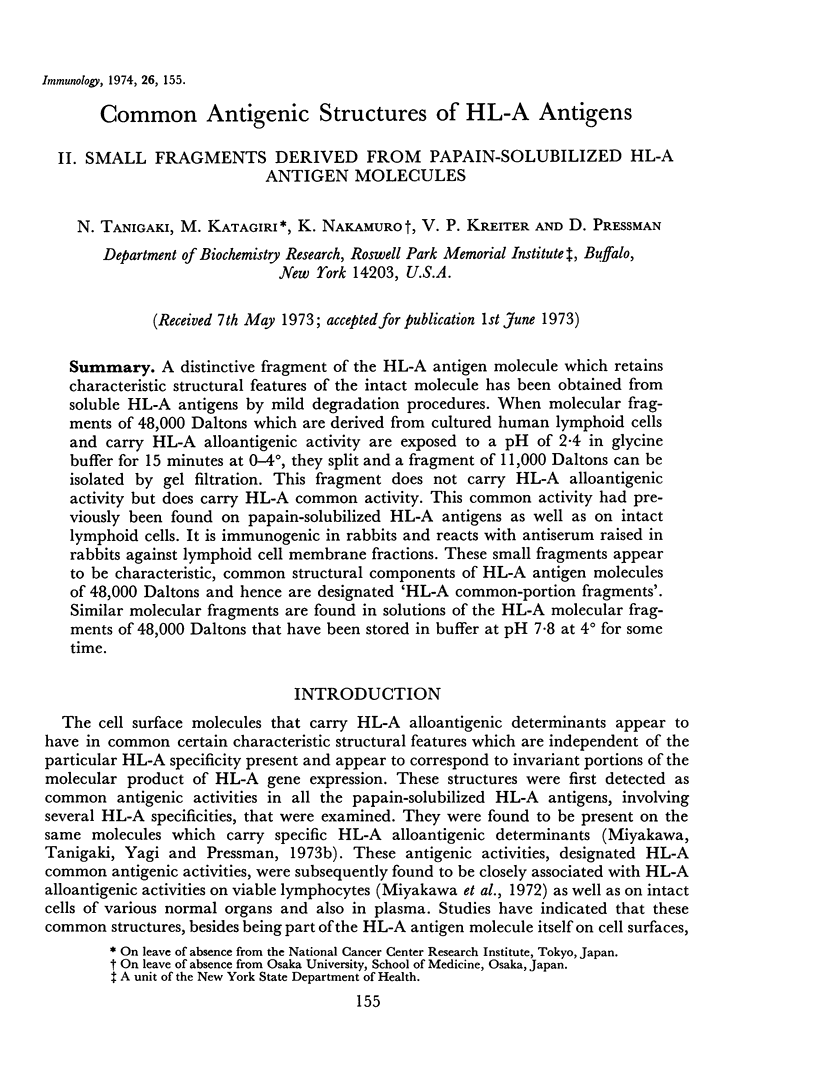
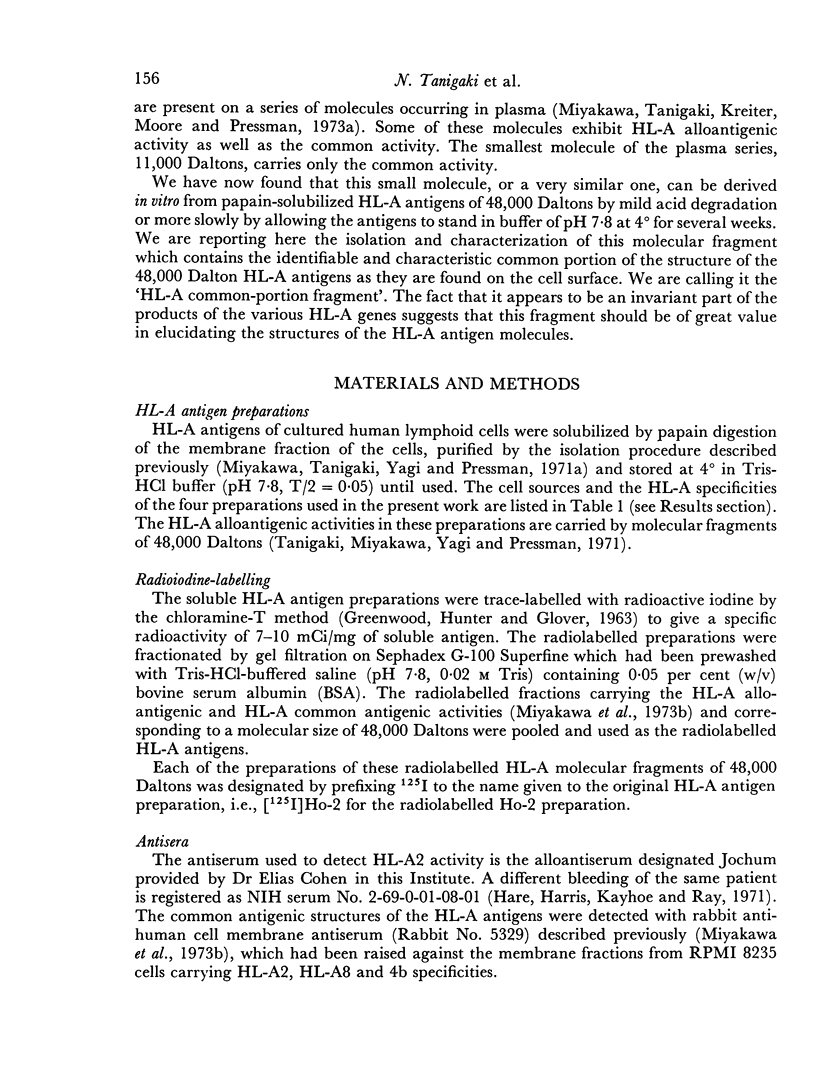
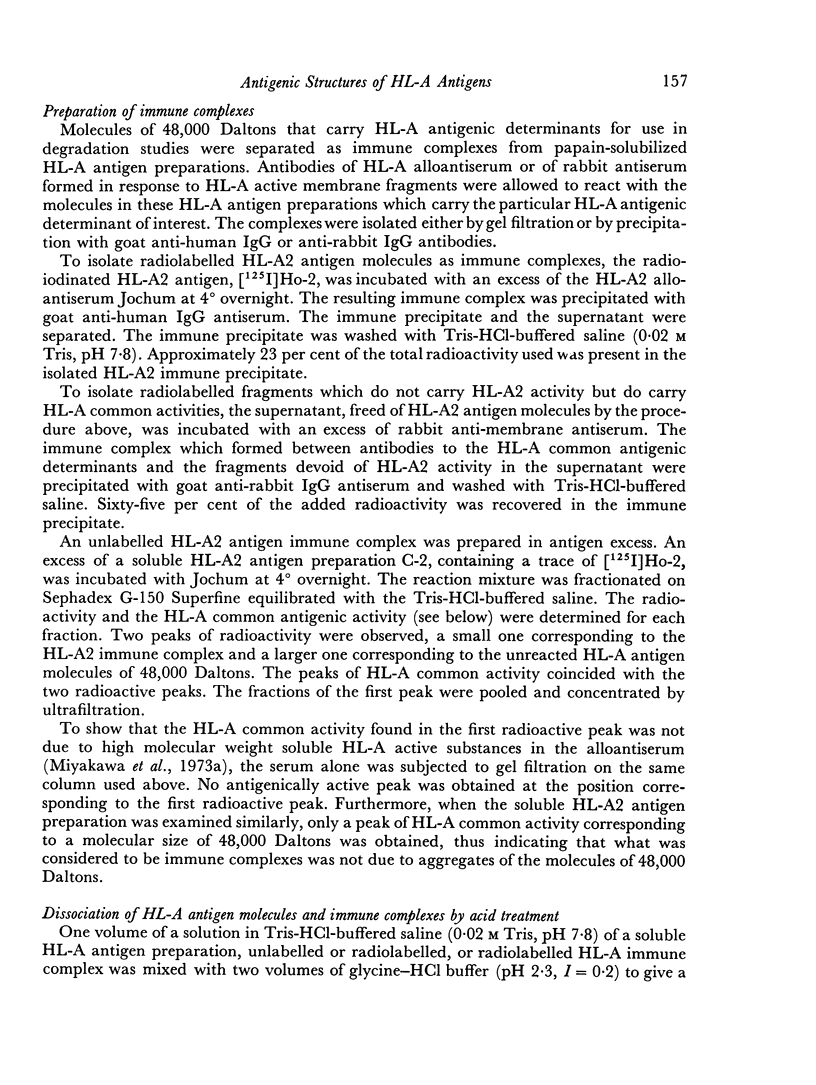
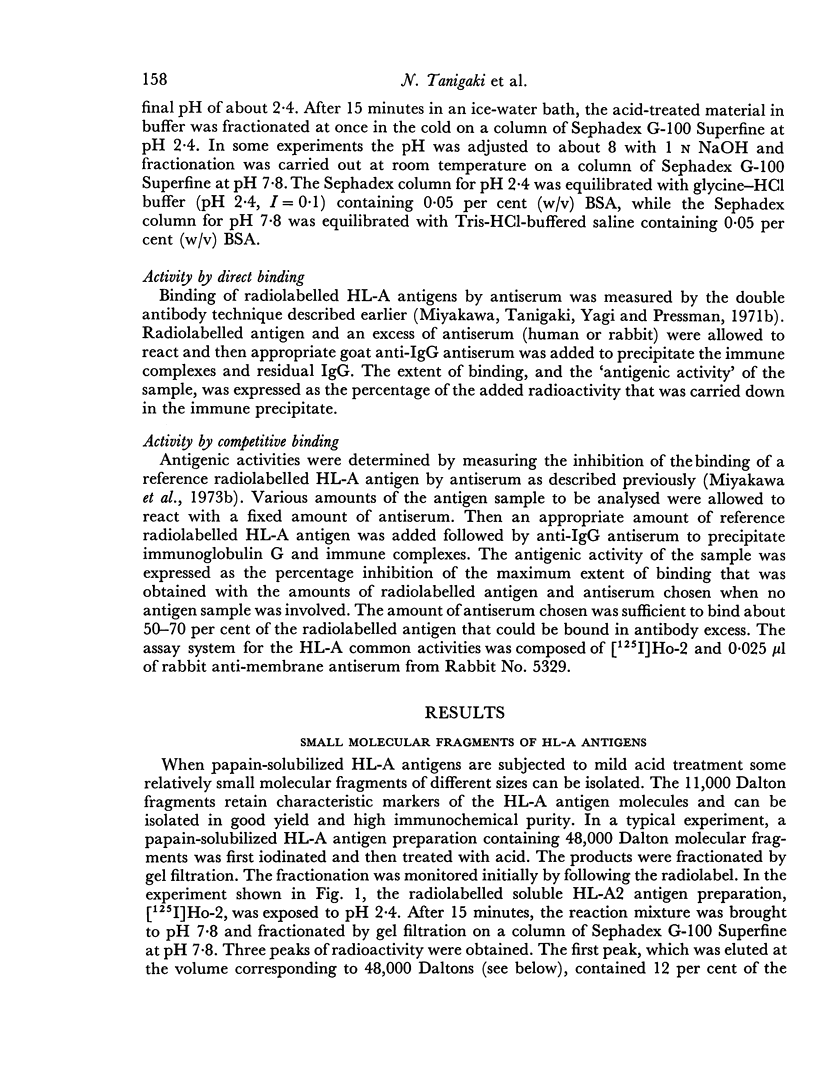
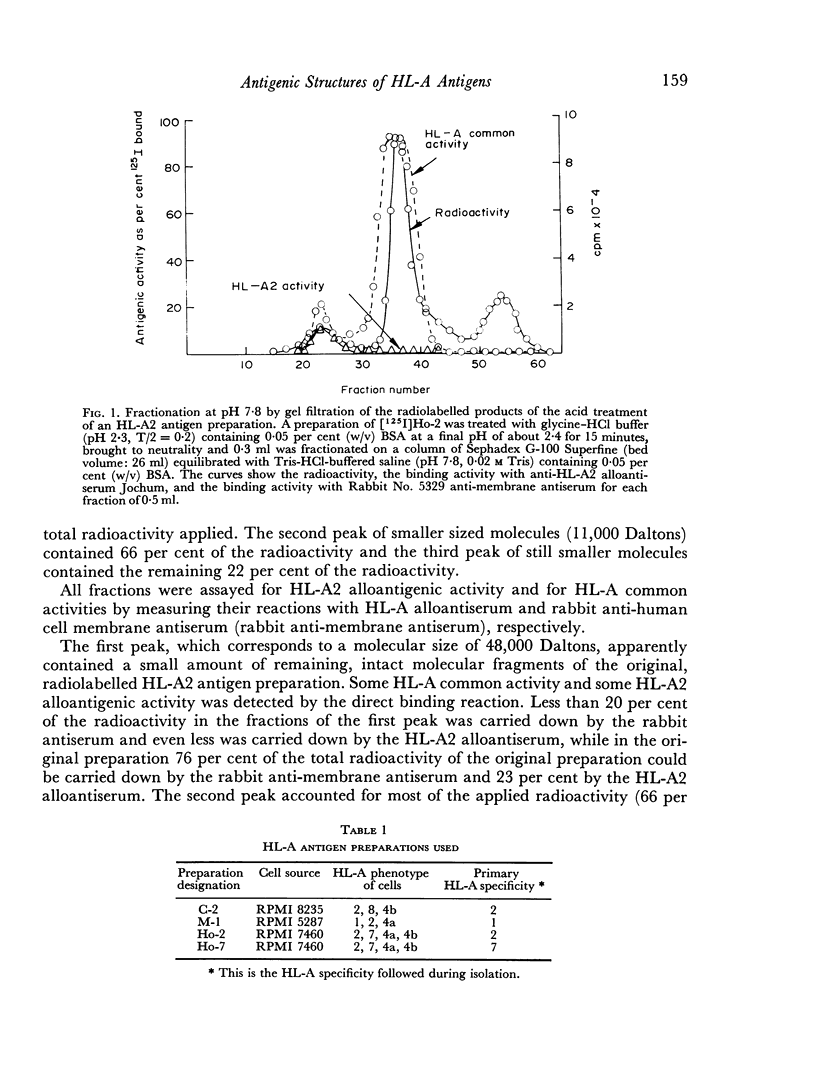
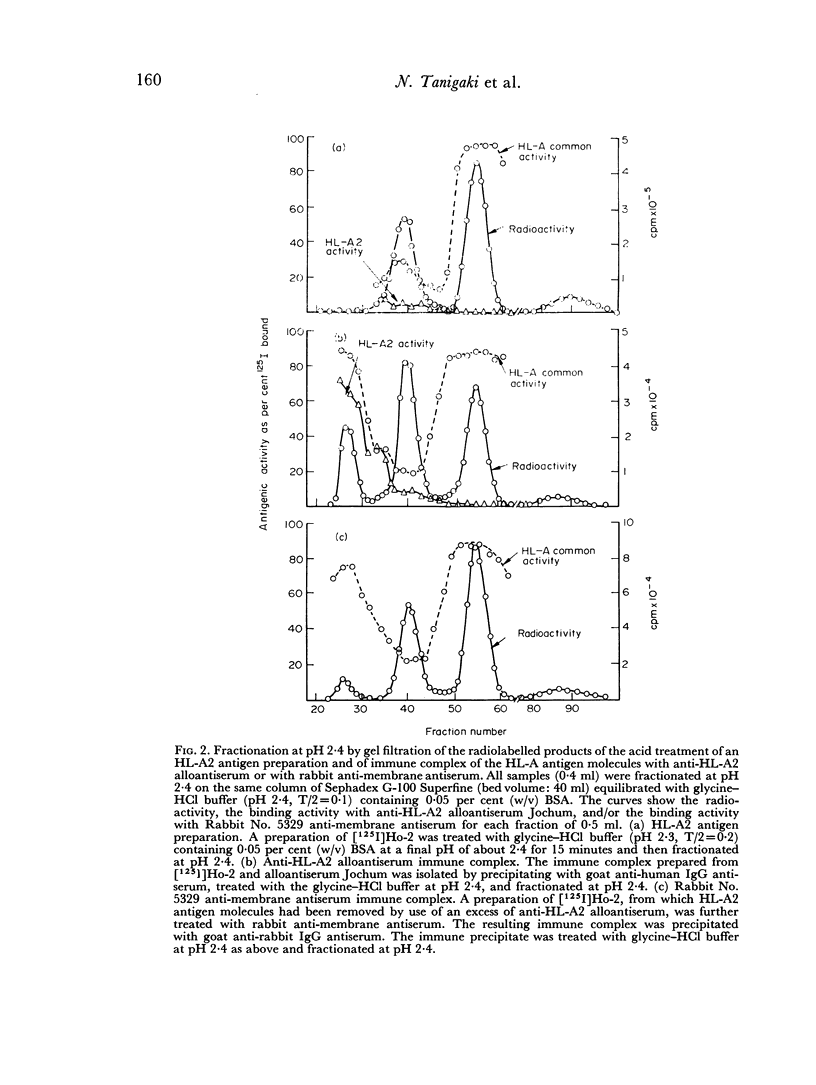
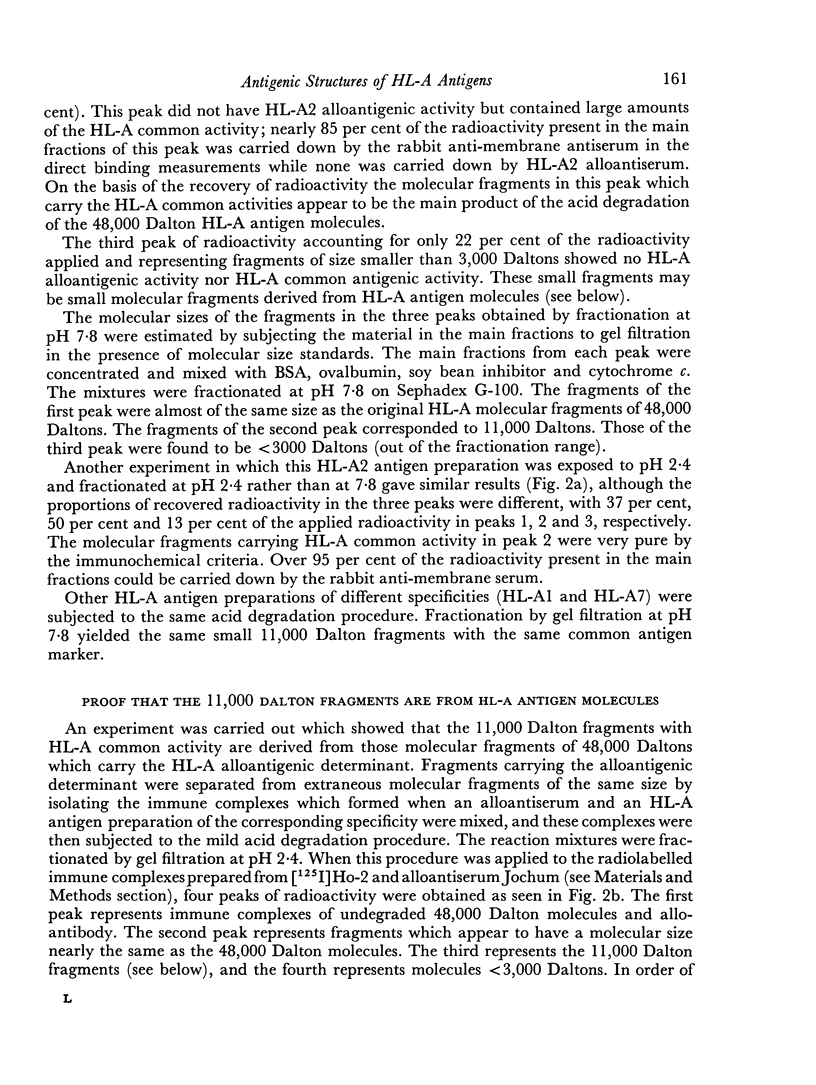
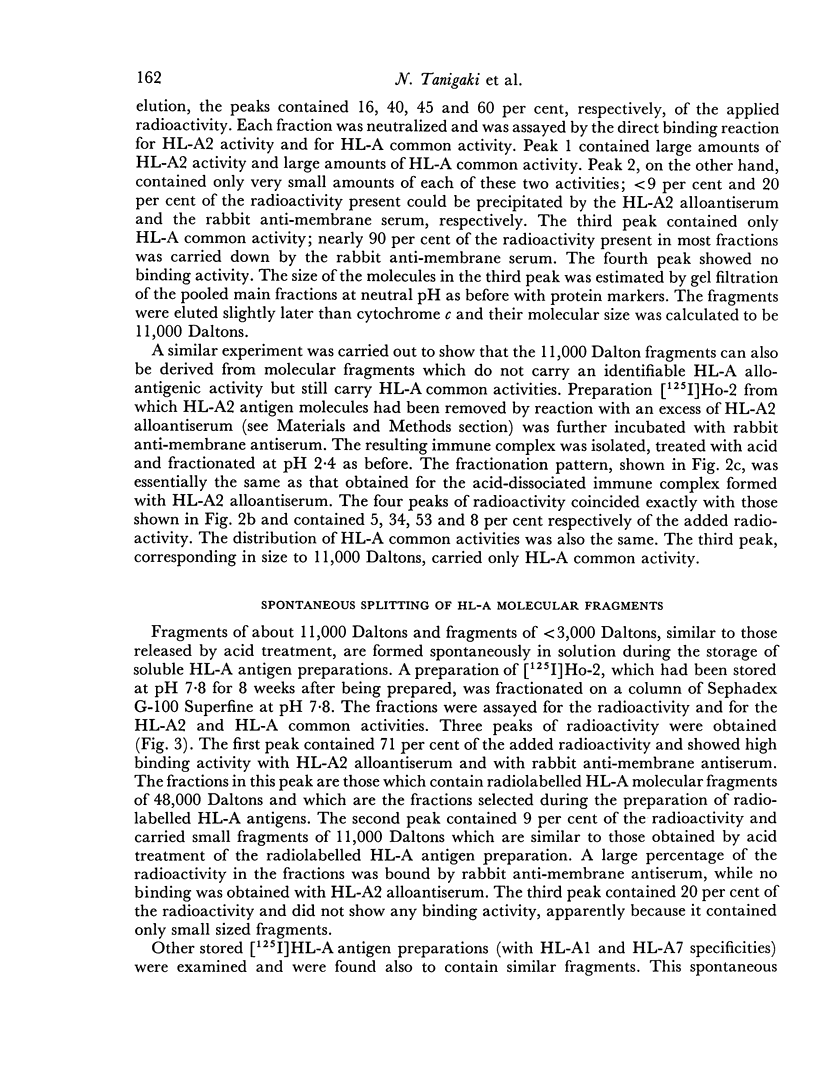
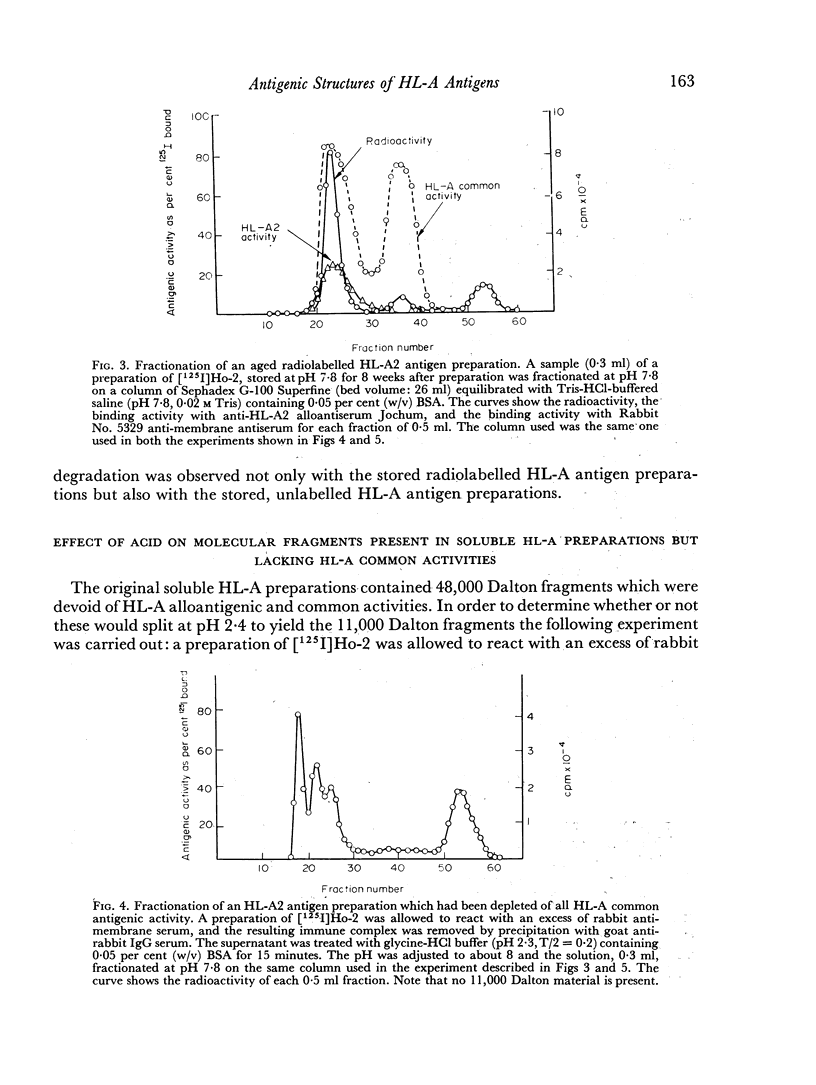
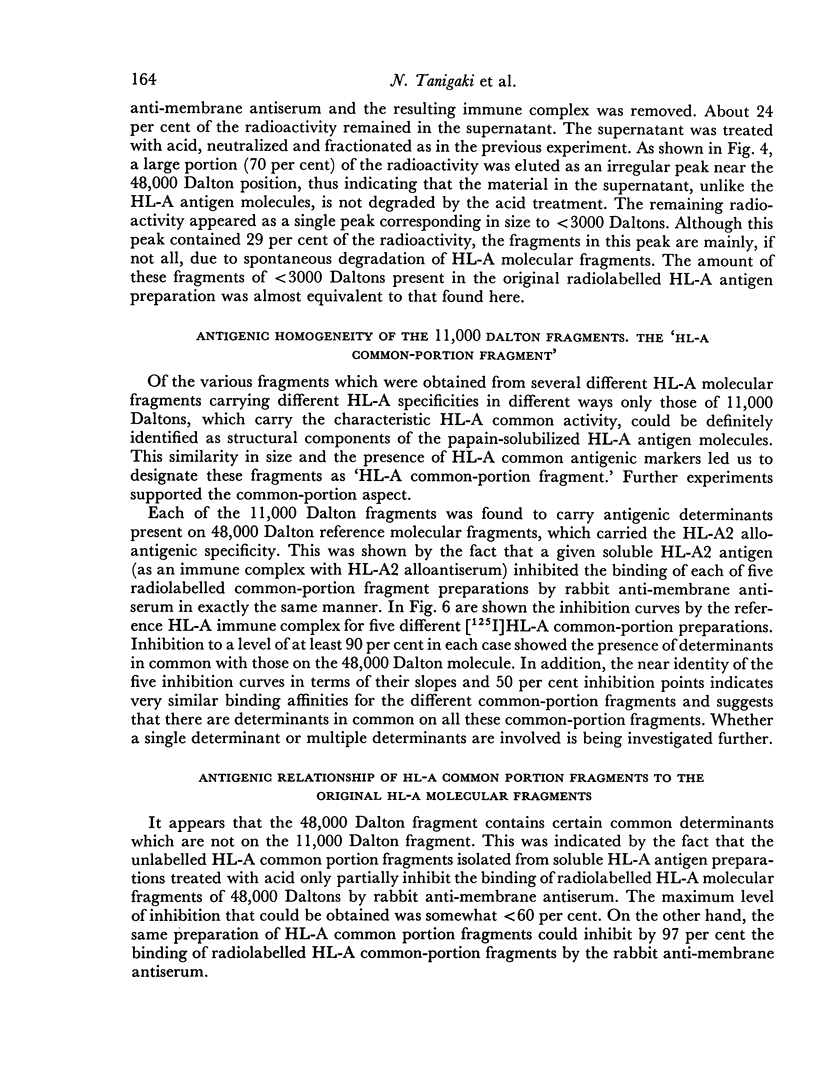
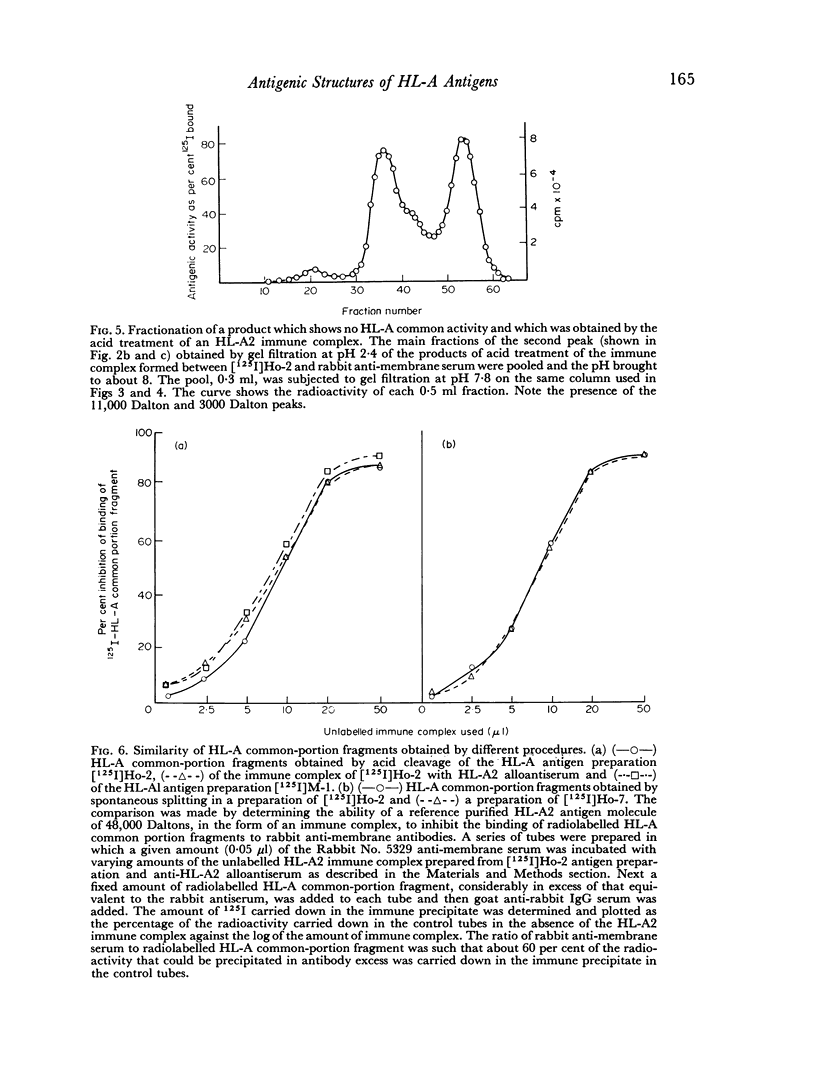
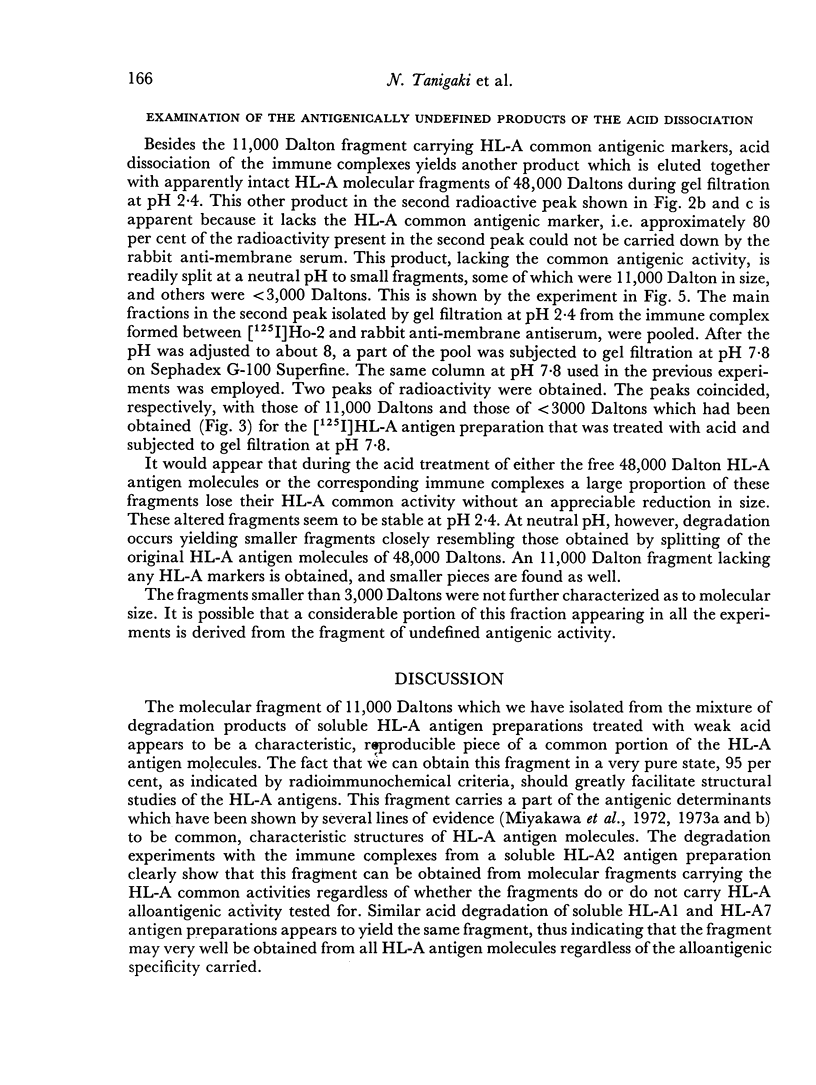
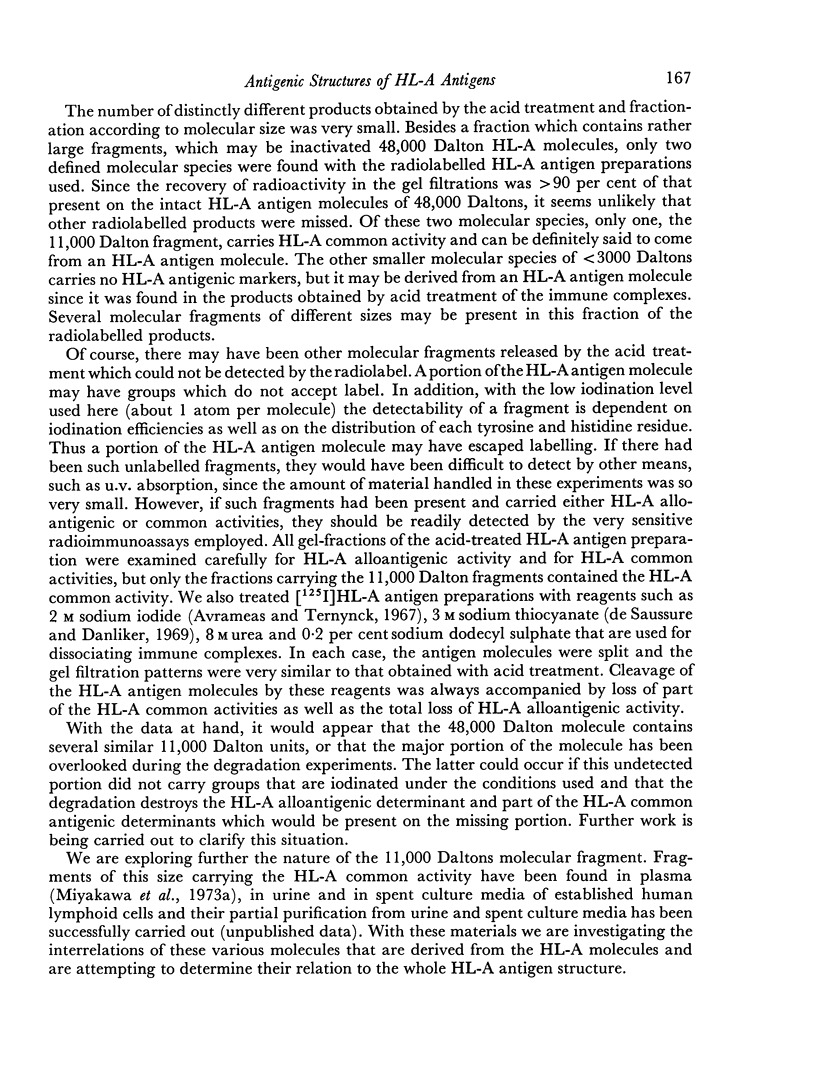
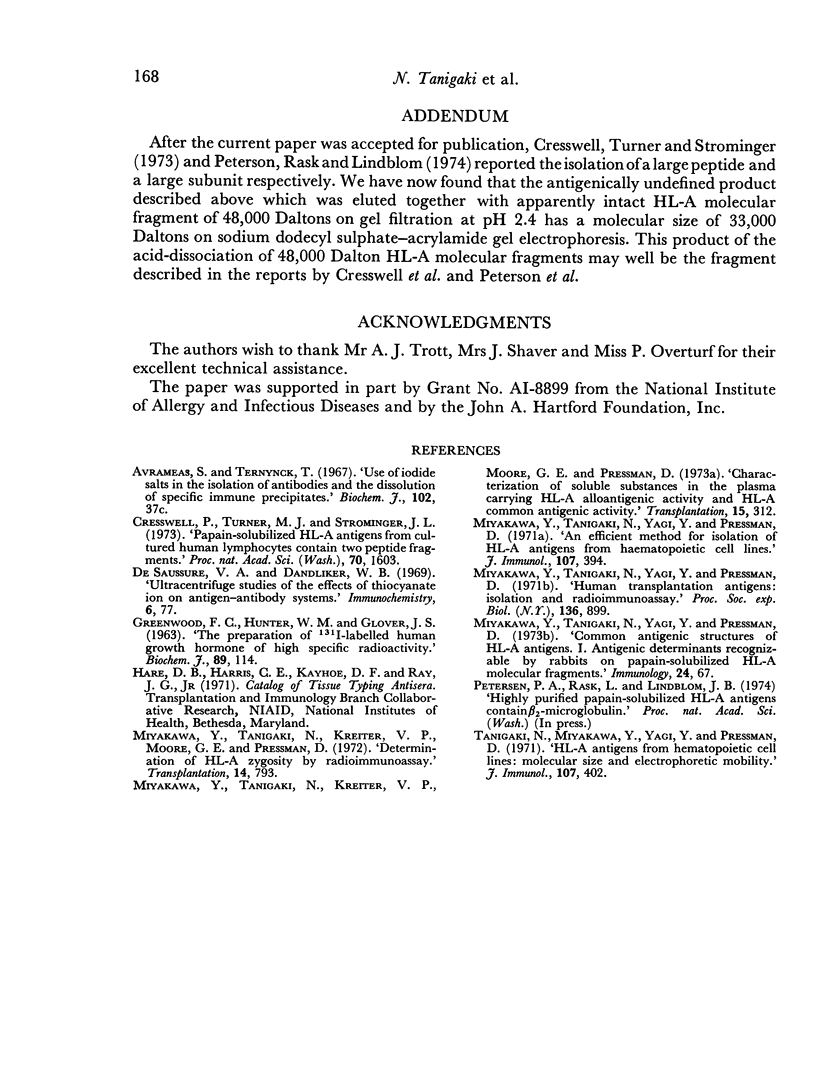
Selected References
These references are in PubMed. This may not be the complete list of references from this article.
- Cresswell P., Turner M. J., Strominger J. L. Papain-solubilized HL-A antigens from cultured human lymphocytes contain two peptide fragments. Proc Natl Acad Sci U S A. 1973 May;70(5):1603–1607. doi: 10.1073/pnas.70.5.1603. [DOI] [PMC free article] [PubMed] [Google Scholar]
- De Saussure V. A., Dandliker W. B. Ultracentrifuge studies on the effects of thiocyanate ion on antigen--antibody systems. Immunochemistry. 1969 Jan;6(1):77–83. doi: 10.1016/0019-2791(69)90180-3. [DOI] [PubMed] [Google Scholar]
- GREENWOOD F. C., HUNTER W. M., GLOVER J. S. THE PREPARATION OF I-131-LABELLED HUMAN GROWTH HORMONE OF HIGH SPECIFIC RADIOACTIVITY. Biochem J. 1963 Oct;89:114–123. doi: 10.1042/bj0890114. [DOI] [PMC free article] [PubMed] [Google Scholar]
- Miyakawa Y., Tanigaki N., Kreiter V. P., Moore G. E., Pressman D. Characterization of soluble substances in plasma carrying HL-A alloantigenic activity and HL-A common antigenic activity. Transplantation. 1973 Mar;15(3):312–319. doi: 10.1097/00007890-197303000-00008. [DOI] [PubMed] [Google Scholar]
- Miyakawa Y., Tanigaki N., Kreiter V. P., Moore G. E., Pressman D. Determination of HL-A zygosity by radioimmunoassay. Transplantation. 1972 Dec;14(6):793–796. doi: 10.1097/00007890-197212000-00021. [DOI] [PubMed] [Google Scholar]
- Miyakawa Y., Tanigaki N., Yagi Y., Pressman D. An efficient method for isolation of HL-A antigens from hematopoietic cell lines. J Immunol. 1971 Aug;107(2):394–401. [PubMed] [Google Scholar]
- Miyakawa Y., Tanigaki N., Yagi Y., Pressman D. Human transplantation antigens: isolation and radioimmunoassay. Proc Soc Exp Biol Med. 1971 Mar;136(3):899–902. doi: 10.3181/00379727-136-35390. [DOI] [PubMed] [Google Scholar]
- Tanigaki N., Miyakawa Y., Yagi Y., Pressman D. HL-A antigens from hematopoietic cell lines: molecular size and electrophoretic mobility. J Immunol. 1971 Aug;107(2):402–408. [PubMed] [Google Scholar]


